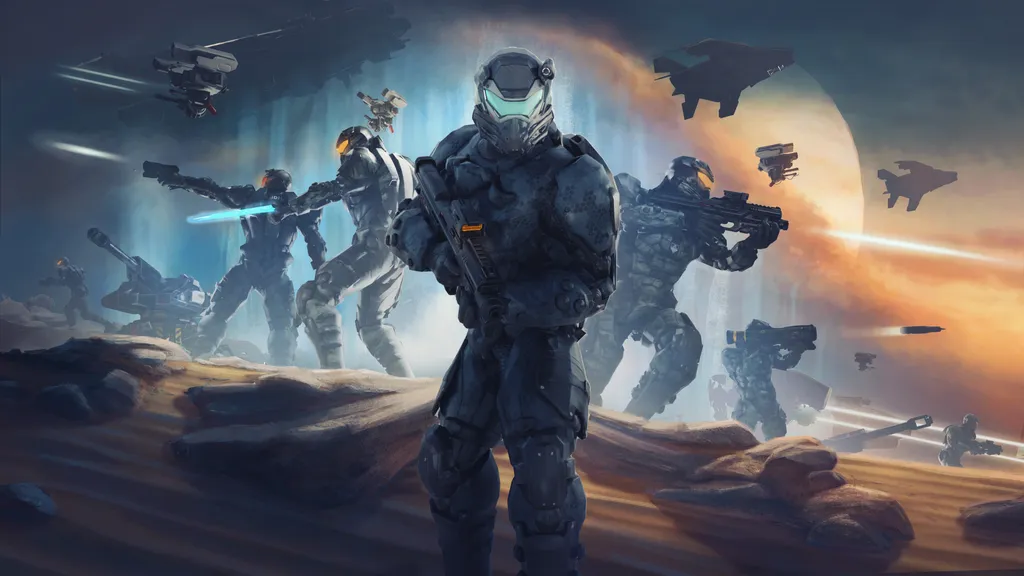Guardians Frontline takes inspiration from StarCraft and Halo to bring a new hybrid action and real-time strategy game to Quest 2. Here’s our full review of Guardians Frontline on Quest 2.
Guardians Frontline is the kind of Cinderella story that makes indie VR so exciting.
In March of 2021, a plucky hybrid action title called Guardians VR launched on App Lab. A little rough around the edges, Guardians VR had big ambitions and even bigger potential, aiming to combine the best elements of classic sci-fi shooters with their real-time strategy (RTS) counterparts.
Platforms: Quest 2, Quest Pro (review conducted on Quest 2)
Release Date: Out Now
Developer: VirtualAge Games
Price: $25
Undeterred by its place on App Lab, developers VirtualAge continued to update and iterate on their title, garnering a cult following within the VR community along the way. So much so that established VR developer Fast Travel Games took note and brought Guardians VR under its new publishing wing.
Supported by the gaming equivalent of a fairy godmother, VirtualAge continued development and now, almost two years later, is ready to debut the revamped, new-and-improved Guardians Frontlines on the official store. One big question remains: have the extra resources turned this plucky little indie title into the proverbial bell of the ball?
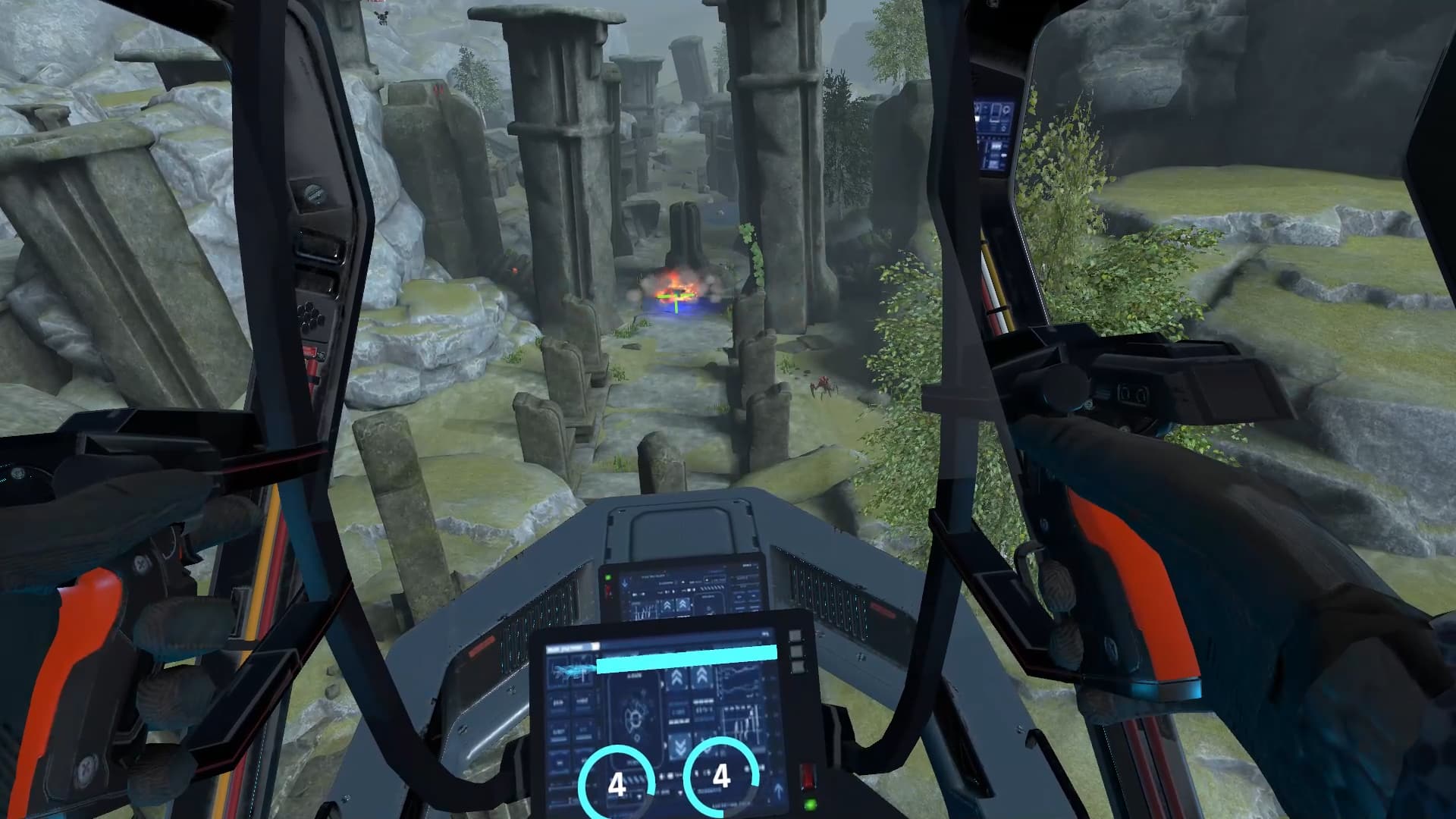
HaloCraft
At its heart, Guardians Frontline is a love letter to StarCraft and Halo.
By fusing visual inspiration from both games and mixing the core conceits of two widely different genres, VirtualAge has created something completely unique for the Quest library. Guardians Frontline plays primarily as a first-person shooter (FPS). However there’s also a wonderfully-implemented resource management and troop deployment component, including elements of base building and upgrade specialisations that reinforce the marriage between the genres. It’s this well-designed duality that sets Guardians Frontline apart from the plethora of space-themed shooters.
Graphically, Frontlines operates at a respectable level with a visual style clearly inspired by the aforementioned flatscreen touchstones. Gameplay takes place across three distinct worlds with different biomes, some of which work better than others. Some textures feel grainy and some landscapes sparse, but overall the worlds feel polished and well-realized.
Throughout the campaign players embody a ‘Guardian’, a galactic marine charged with protecting frontier mining operations against a bug-like race of Starship Troopers-esque aliens. While the range of enemy types is excellent, the visual design, models and animations fall slightly short of other titles in the genre, such as Crashland.
Frontline’s campaign will see players tackle fourteen missions across three distinct planets, with each mission taking fifteen to thirty minutes to complete on normal difficulty. Missions do have a level of narrative preamble that links the flow of combat from one mission to the next, but it is fairly rudimentary.
Frontline could hardly be considered a story-driven adventure. Instead, missions essentially serve as a rigorous training montage that teach the vital skills needed in order to progress to the game’s longer-term co-op and PvP multiplayer modes. There’s also a map editor and an interesting experiment in perpetual content called Galaxy Conquest, but more on that later.
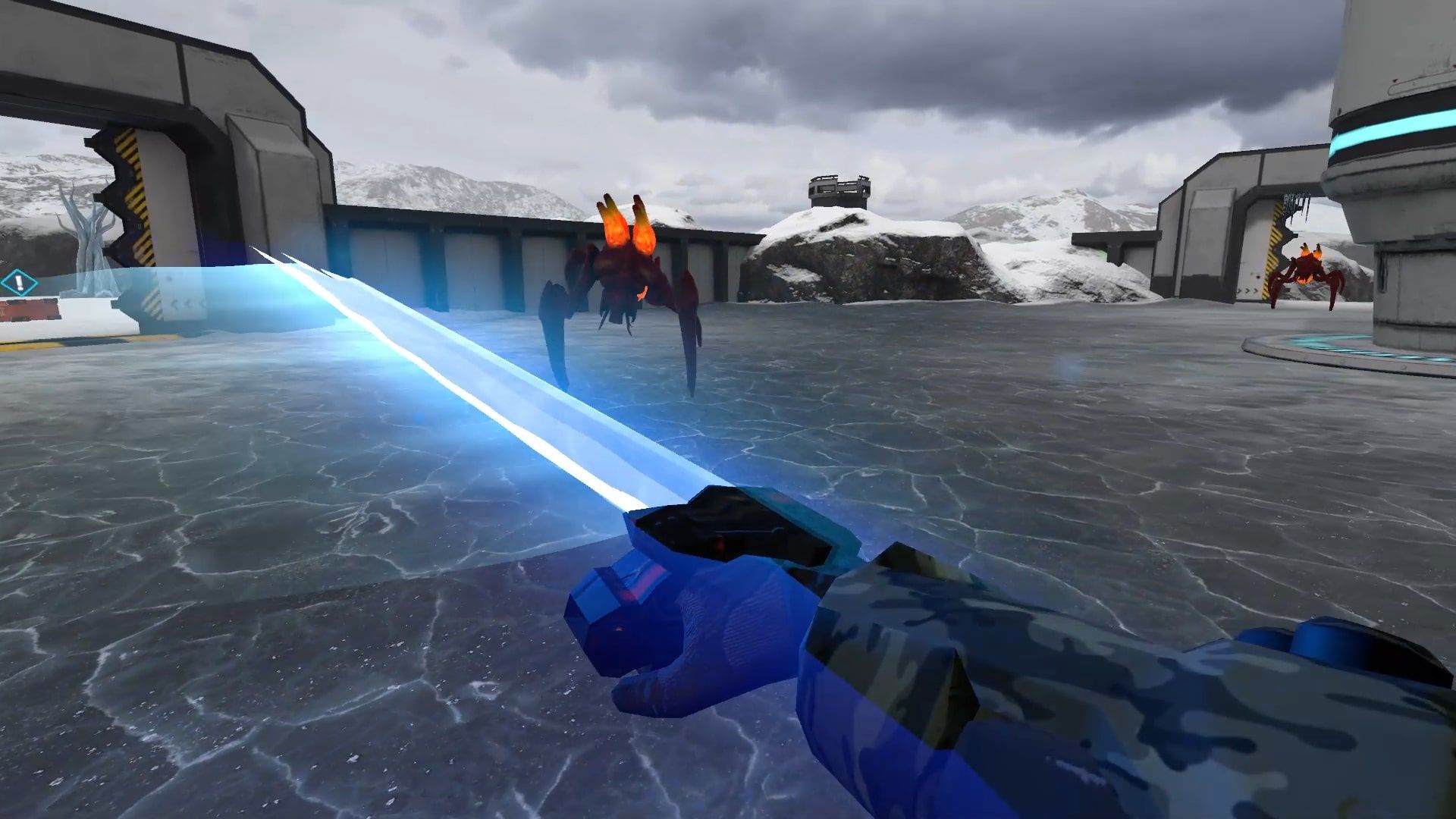
Fusion Reactor
Guardians’ gameplay is an intuitive mix of FPS action and tactical RTS style command. For the majority of the game, players will occupy a first-person view, running and gunning through the action. There’s an impressive array of futuristic weaponry to wield and combat vehicles to pilot, with a not-so-subtle salute to the classic Halo franchise. Weapons are attached to five holster points around the body, so accessing them on the fly is easy and intuitive.
The gunplay is highly satisfying. Facing off against the swarms of insectoid enemies alone would have made Frontline a decent enough game in its own right, but there’s also an easy-to-use tactical deployment system that players can access without missing a beat. At any time, you can raise your inventory menu with your non-dominant hand, making it easily moved and non-obstructive during combat. Troops, buildings and defensive units are clearly laid out here, allowing you to select, group and control units with ease, even in the head of battle.
You can also innovatively switch from first-person ‘combat view’ to ‘tactical view’, which gives a top-down view of the battlefield. From this vantage, players can take on a more strategic role, tracking opponents and countering them by deploying and moving troops around the map. This seamless switching between the two views creates a unique and triumphant blend between fast-paced action and the most accessible elements of RTS games.
It’s the UI that makes this possible, offering a lot of options that balance deployment, command and combat without overwhelming the player. The intuitive system is one of the game’s great achievements and means you can move troops, place defences and keep the shells hitting the floor at a steady rate. The game also features top-notch sound design, with clear audio cues that cut through the chaos and good use of spatial audio that lets players broadly identify areas of conflict across the map.
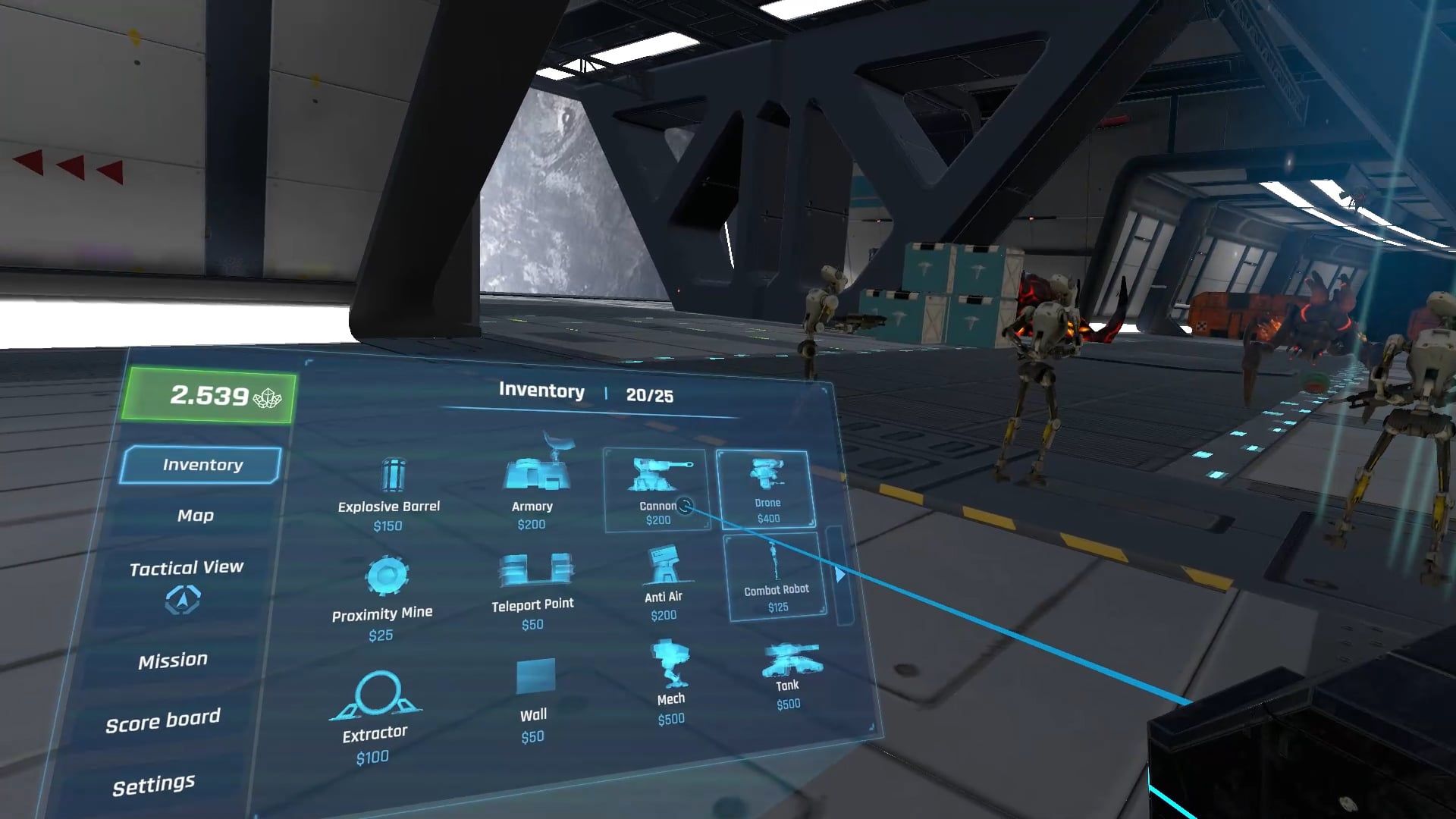
The Only Good Bug Is A Dead Bug
There’s five main mission types in Frontline, playale in both single and multiplayer – Conquest, Domination, Survival, Protect and Defend. Each is enjoyable in their own right, but Conquest mode is the standout.
This mode sees players tasked with eliminating every enemy nest, which spread throughout the map as the battle rages, requiring players to take strategic locations and attack on various fronts. The battlefield in Conquest mode exists in a constant state of flux and victory hinges on a fluent command of every system that the game has to offer, weaving a balance of tactical strategy and first-person combat that is simply outstanding.
Comfort
Guardians Frontline has a range of comfort options designed to make the game accessible for those with a sensitivity to motion sickness. There’s both teleport and artificial movement options, with snap/smooth turn and adjustable vignettes. Players can also traverse large areas of the map via teleportation waypoints, which will be a big help for those who struggle with artificial locomotion.
While VirtualAge try to balance engagement and accessibility, certain features (such as the jetpack) add a faster element to the gameplay and players will benefit most from being able to move freely in-game.
Final Frontier
Guardians Frontline also takes a somewhat risky move that relies on user-generated content to sustain long-term gameplay. Once the campaign is completed, the player has access to a range of multiplayer modes, including the map editor. This allows for detailed level creation, including support for collaborative multiplayer where players can meet up in-game to create maps and missions together.
The map editor is surprisingly robust and impressive, which is fortunate because the content generated in it forms the basis of VirtualAge’s ‘Galaxy Conquest’ game mode. Galaxy Conquest provides players with a range of disputed planets in conflict, each of which is made up of three user-generated missions. Players can browse solar systems and decide where to deploy their efforts, so eradication of enemy hordes becomes a collaborative achievement among players online and rewards upgrade points that affect your abilities across all modes.
Delivered well, this would offer an innovative system of perpetual content for players. In the hands of talented community members, the map editor could be used to great effect to sustain this game mode, but the reality is that the current community content doesn’t always live up to the standards set by the rest of the game. There are nonetheless some truly exciting community-made levels on display in Galaxy Conquest, but overall the game mode is currently better in concept than in execution. More time spent curating the quality of content on offer would probably go a long way to improving the experience.
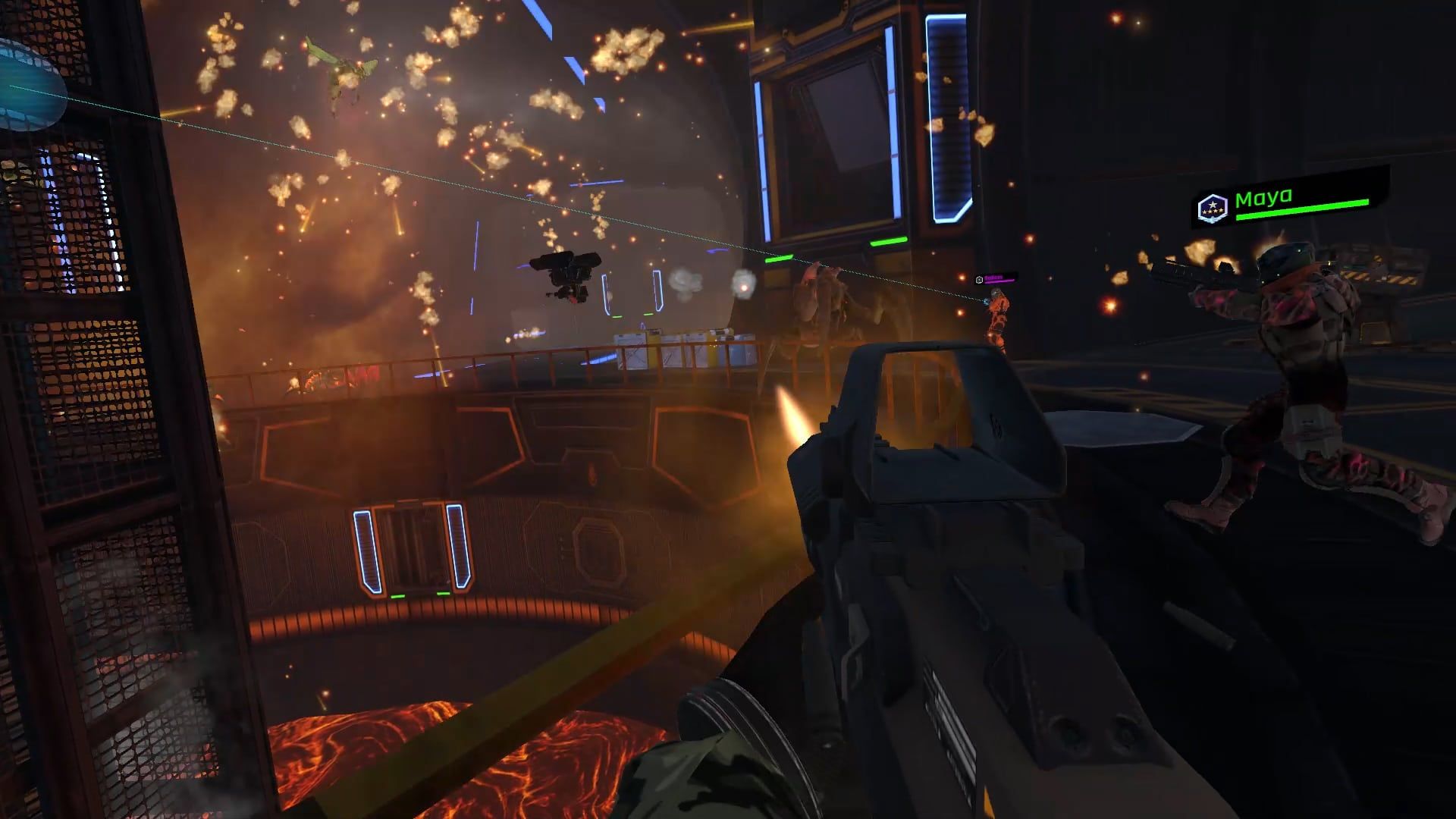
Guardians Frontline Review – Final Verdict
Guardians Frontline is an ambitious attempt to combine the best elements of two disparate genres that succeeds in creating something truly original for the Quest platform. Through a mix of clever UI design and a focus on solid gaming fundamentals, VirtualAge manages to achieve something unique, intuitive and completely immersive. With a solid campaign, engaging multiplayer modes and the potential for a swathe of community-generated content, Guardians Frontline is easy to recommend as an experience unlike any other on the platform.

UploadVR focuses on a label system for reviews, rather than a numeric score. Our reviews fall into one of four categories: Essential, Recommended, Avoid and reviews that we leave unlabeled. You can read more about our review guidelines here.

